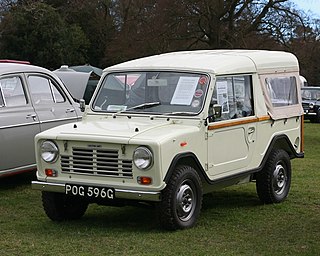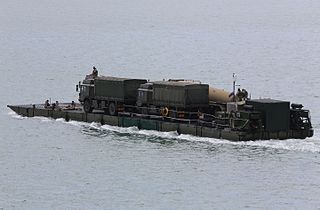 W
WThe UK All Terrain Mobility Platform is commonly known by the name of its manufacturer Supacat. It is a lightweight, 6-wheeled vehicle used by airborne and air-mobile forces of the British Army.
 W
WThe Alvis Salamander is a six-wheel drive airport crash tender with off-road capabilities, developed in 1956.
 W
WThe Alvis Tactica is a 4x4 or 6x6 wheeled military vehicle produced by GKN Defense, Alvis plc and later by BAE Systems Land Systems. The vehicle was designed by Glover Webb and introduced in 1988. It comes in a number of variants including APC and Internal Security and Riot Control. The platform is no longer produced by BAE Systems.
 W
WThe Austin Ant is a small four-wheel drive vehicle that was designed by Sir Alec Issigonis for the motor manufacturer Austin. Although the Ant is widely regarded as a military vehicle, some sources suggest it was conceived with civilian use in mind as well. In its military role, it was a potential successor to the military version of an earlier Issigonis design, the Mini Moke.
 W
WThe Austin Champ was a military and civilian jeep-like vehicle made by the Austin Motor Company in the 1950s. The army version was officially known as "Truck, 1/4 ton, CT, 4×4, Cargo & FFW, Austin Mk.1" however the civilian name "Champ" was universally, if unofficially, applied to it. The majority of Champs produced went to the British Army.
 W
WThe Centurion ARV Mk II, was a British armoured recovery vehicle based on the Centurion main battle tank.
 W
WThe Land Rover Defender is a British four-wheel drive off-road vehicle developed in the 1980s from the original Land Rover series which was launched at the Amsterdam Motor Show in April 1948.
 W
WThe Land Rover series I, II, and III, or simply the Land-Rover, are compact British off-road vehicles, produced by the Rover Company since 1948, and later by British Leyland. Though unapologetically inspired by the World War II jeep, the Land Rover immediately distinguished itself from all other cars. From launch, it was the first mass-produced civilian four-wheel drive car with doors on it, and an available hard roof. Contrary to conventional car and truck chassis, it used a sturdier fully box-welded frame. Furthermore, due to post-war steel shortage, and aluminium surplus, Land Rovers received non-rusting aluminium alloy bodies, favouring their longevity. In 1992, Land Rover claimed that 70% of all the vehicles they had built were still in use.
 W
WThe Land Rover Wolf is a light military vehicle based on the Land Rover Defender introduced in 1994. The MoD designates the Wolf 90 as Truck Utility Light (TUL) HS and the Wolf 110 as Truck Utility Medium (TUM) HS. Where HS stands for High Specification. Land Rover calls it eXtra Duty (XD).
 W
WThe Mexeflote is a landing raft used by the British Royal Logistic Corps and the Royal Australian Navy to move goods and vehicles between ship and shore. It was first used by British military in the 1960s. It was used during the Falklands conflict, and has been used in humanitarian aid missions. The system is very similar to the Rhino ferry.
 W
WThe name Nuffield Gutty was used for three prototype vehicles built in 1947 in an attempt to meet a British War Department specification for a light field car to replace the American Jeep that was in service in large numbers following the war. This vehicle featured a horizontally opposed 4-cylinder engine similar to that designed for the planned small post-war car to be called the Morris Mosquito, that eventually appeared as the Morris Minor.